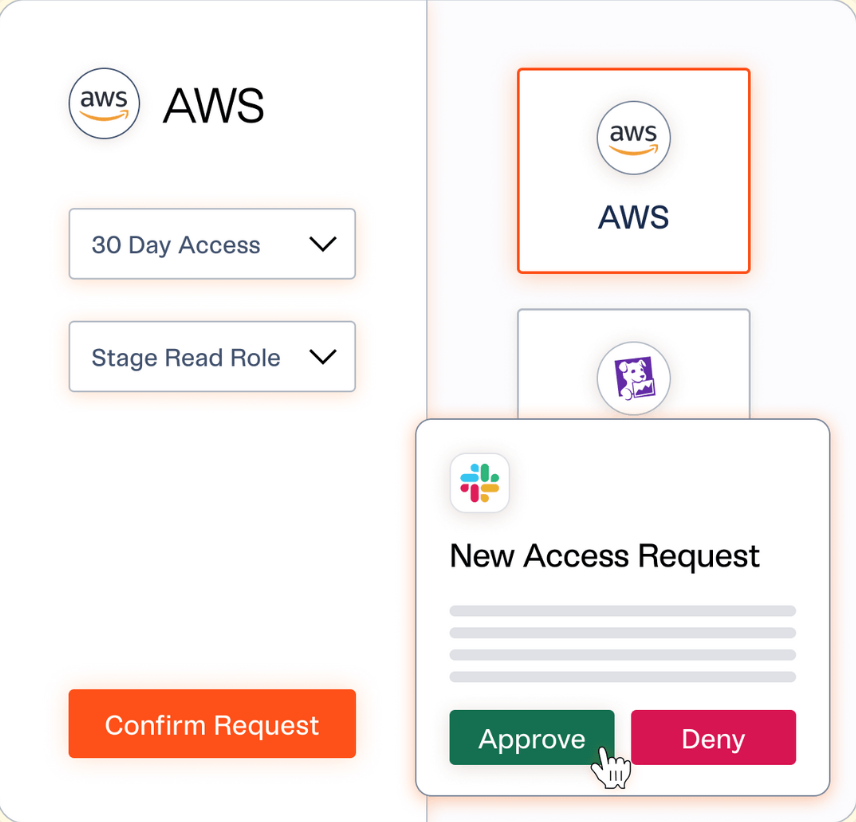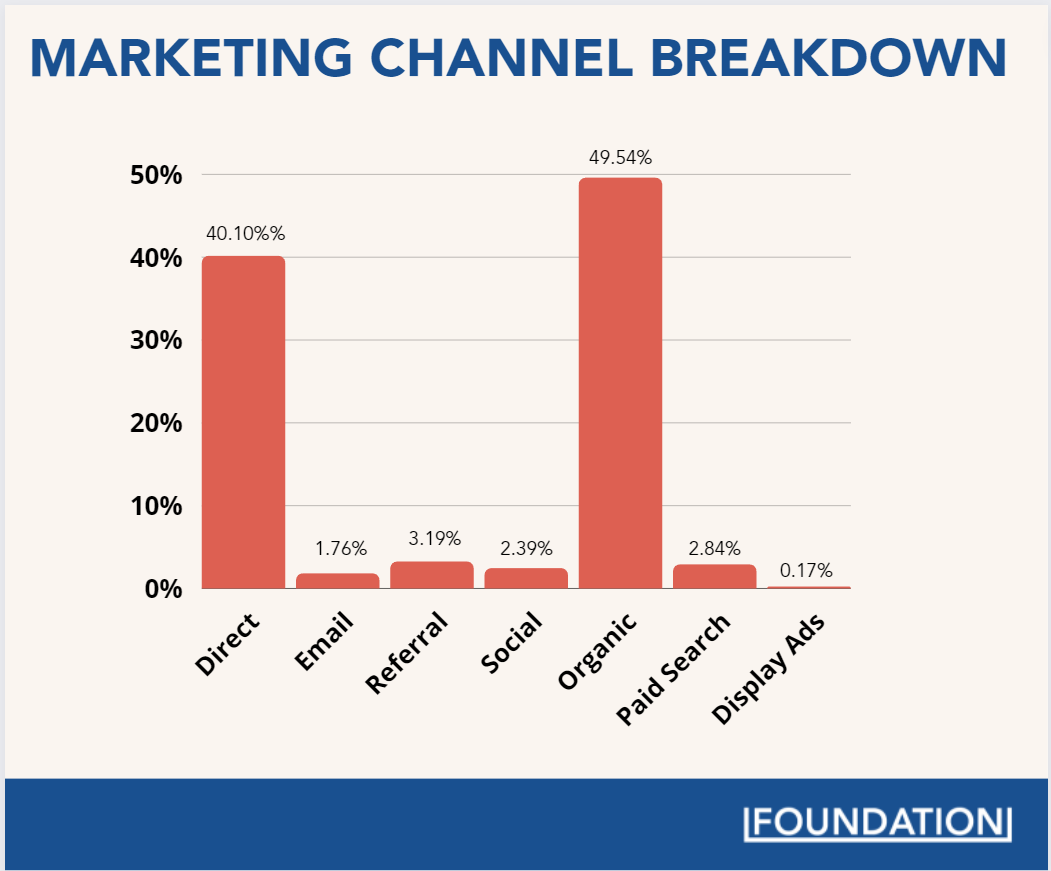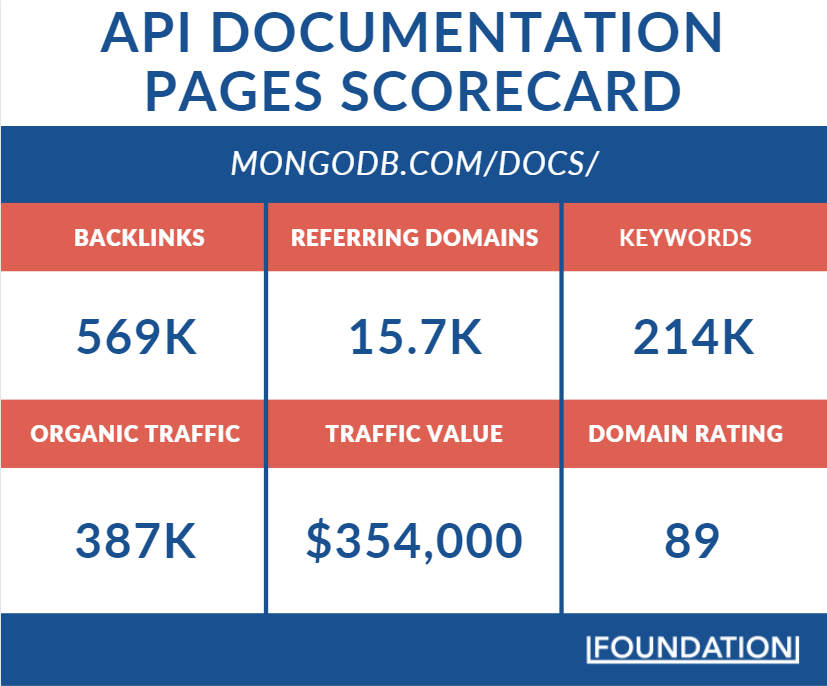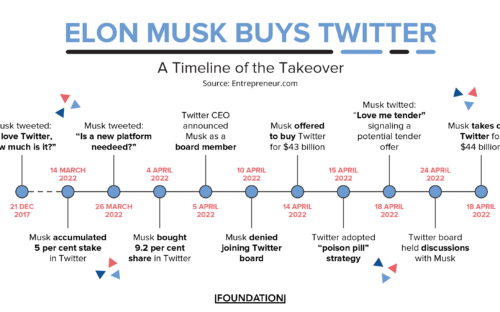Article's Content
Welcome to Volume 82,
Before we dive into the juicy stuff, I just wanted to give you a quick workplace safety PSA for the Work From Away era: take care of your body!
As marketers, we focus a lot of our energy on positioning our companies for sustained success, but we often forget to do the same for our bodies — I know I do. And that’s manifested in some rather distracting neck and back pain over the past month. Not fun.
With an endless stream of content to consume and rapidly approaching deadlines, it’s easy to try and push through. I often catch myself saying, “I’ll do some stretches tomorrow morning” or “I’ll go for a walk later.” But that inevitably gets pushed back.
Whether you’re working in a home office, on-site, or from your kitchen counter, make sure you’re setting yourself up for success, mentally and physically.
So before you get glued to that screen, take a second to go for a walk or do some yoga.
This newsletter will still be here when you get back.
Before we dive into today’s stories, here’s a peek at what’s to come in this piece:
- How Storytelling Helped Lumos Land $30 Million in Funding
- Documentation is Driving MongoDB’s SEO-Dominance
- Marketing and Community-Building in the DevRel Era
How Storytelling Helped Lumos Land $30 Million in Funding
Lumos is one of the most intriguing startups of 2022, and you likely haven’t heard of them—few had before this week. The company, which has raised over $30 million in funding from the likes of Andreesen Horowitz, Lachy Groom, and Phil Venables, is coming out of the shadows with visions of becoming “the first internal AppStore for companies.”

That’s not just a catchy marketing phrase. According to a 2021 report by Productiv, companies are struggling with SaaS sprawl in a number of ways:
- SMB companies use 240 apps on average, with enterprise companies averaging 350
- Only 45% of SaaS tools see regular use and engagement drops as companies scale
- Over 80% of tools comply with less than half of the 7 recommended security certifications
- The amount of shadow IT — tools without IT oversight and management — is climbing
A burden on budgets, productivity, and security, SaaS sprawl is a problem that’s only going to increase. That’s why Lumos is augmenting the cumbersome IT ticket strategy with a self-service model protected by role-based access control (RBAC) and wrapped nicely in, as a16z partner Peter Levine puts it, “consumer-grade UX.”

Clearly, Lumos is coming to the market with an excellent system and solid product-market fit. But if you ask the co-founders, what really sets Lumos apart is the fact that they’re a story-led company. I very much agree.
The story begins with two Stanford students in a computer science ethics class. The professor describes how little control people have over their online identities, prompting Lumos co-founder Andrej Safundzic to check in on his password manager. It displayed 400 different passwords for “400 Andrejs online.” Unfortunately, only the real Andrej is capable of managing all these online manifestations, a process that takes days on end.
And that’s just for one person. Scale that to an enterprise company and you have the setting and villain of Lumos’s story: companies looking to survive the APPocalypse (Andrej-speak for SaaS sprawl) using support ticket systems that overwhelm IT departments with administrative tasks. It’s a sad state of affairs all around.
This is where Lumos enters the story.
The startup envisions a future where enterprise employees navigate their massive tech stack with the same ease that you and I flow through the App Store or Google Play on our mobile devices. They envision a future where the cumbersome ticketing system is replaced by a self-service model secured with RBAC, allowing people to manage accounts from a single platform. A “unified authorization layer.”
From Andrej and Co.’s perspective, Lumos isn’t about building a product (a highly coveted one at that). It’s about building a movement.
Key Takeaways
- According to a Productiv report, SaaS sprawl is getting out of control — SMBs and enterprise companies average 240 and 350 apps in their tech stacks, respectively.
- Lumos is out of stealth mode with $30 million in funding and is ready to create the first AppStore for enterprises to tackle this issue.
- Lumos co-founders are using a story-led approach to create additional value for customers bearing the brunt of SaaS sprawl.
- Their mantra: “Build a Movement, Not a Product”.
Documentation is Driving MongoDB’s SEO Dominance
Our teardown from this week showcases the powerful SEO arsenal that more technical SaaS companies have in their possession (and often aren’t fully leveraging).
It’s a marketing edge crucial to maintaining a strong connection with the end-user and, in the case of MongoDB, turns underdog companies into giant killers. MongoDB is one such underdog.
The rapid adoption of cloud computing is creating a marketplace where large companies possess massive amounts of unstructured data. Far from “unuseful,” this type of data is the product of text messages, social media posts, recording devices, and numerous other digital activities we perform throughout our work and personal life.
Unstructured data makes up between 80-90% of the data that organizations collect and produce, contributing to a Big Data analytics market expected to reach a $550 billion USD valuation by 2028.
Unsurprisingly, current cloud leaders aren’t too happy about MongoDB eating into this ever-ripening fruit. Amazon Web Services, Google Cloud, and Microsoft Azure would all love to be the go-to database, not to mention legacy data companies like IBM and Oracle. They may have more resources and name recognition than MongoDB, but they are lacking when it comes to product-led growth and it’s manifesting in the SERPs.
MongoDB on the other hand, well, just take a look:

So, of the 7 million or so visitors MongoDB gets on their website each month, 3.5 million of them arrive organically. Pretty impressive, right?
The reason why organic content is working so well for MongoDB (and why it generally works well for companies with developers as their end-user), is because a large percentage of this content is essential to successfully using the product: software documentation.

The docs subfolder on MongoDB’s site has over 3,000 organic pages, all of them laden with informative content related to their different products and services. It brings in just shy of 390,000 organic visitors each month on the back of 200,000 high-value keywords. It’s an SEO gold mine with a traffic value of $360,000.
But the documentation domination doesn’t stop there for MongoDB. What sets the great SaaS companies, the unicorns, apart from the good ones is how they view this type of content. To a good SaaS brand, developer resources are a highly valuable asset. To the unicorns like MongoDB, they are an extension of the core product.
That means the creators of this content:
- Have expertise in the domain of software development (or are very fast learners)
- Know both the product and end-user inside and out
- Strive for a UX excellence in the content formatting and link structure
As you’ll see in the final story of this newsletter, developers are a bit of a different animal when it comes to marketing (often by their own account). They prioritize clarity, concision, and context and are not looking to be wowed. They’re a utilitarian bunch.
What does this mean for you?
Prioritize extreme alignment between your product and developer resource content—think of them as one and the same.
Key Takeaways
- B2B SaaS companies with technical end-users need to re-evaluate and leverage their API documentation.
- MongoDB is succeeding against major cloud players with a superior product and this extends to their creation of developer resources.
- Software documentation alone drives over 375,000 organic visitors to their site at a value of $350,000.
- MongoDB is so successful in part because they recognize that educational content is an extension of their product offering and not just supplementary.
Marketing and Community-Building in the DevRel Era
The other day, while doing some background research for a teardown, I came across a title that immediately grabbed my attention:
Developer Marketing Does Not Exist.
As someone who thinks they can find an enticing angle to anything, I was naturally intrigued. What marketer can resist a challenge like that? Especially after feeling all high and mighty with my toolbox of MongoDB-inspired developer documentation tricks.
You’ll be happy to hear I’ve been humbled. Developer marketing does not exist…at least, not in the way we traditionally look at marketing. Here’s how author, former programmer, and developer marketing expert at EveryDeveloper, Adam DuVander, puts it:
“Every developer (the origin of our name) has a few basic needs, like clear documentation, help getting started and use cases to spark creativity…
If the most common developer marketer mistake is being too promotional, the second is being too generic. Be specific with the best developer match for your product.”
I know, I know. It sounds like a developer saying “do some market research, find your ICP, and isolate their pain points.” But this is more about changing the framing of marketer-developer interactions than it is tearing down your entire marketing strategy. DuVander still believes in the power of content, just one that prioritizes depth of information and immediate applicability.
But producing educational content is really just the tip of the iceberg for marketing to developers. The real growth driver comes from creating community.
This is where developer relations, or DevRel, comes into play.
DevRel is by no means a new concept—the first iteration of this role was used by Apple nearly 40 years ago—but it’s gaining traction thanks to the increased focus on community-building for both B2B and B2C success. To some, it’s an offshoot of the product-led approach; to others, it’s a new marketing technique; and to many, it’s a department of its own. The answer, as usual, is somewhere in between.

Regardless of the classification, the process of DevRel is to help companies create and maintain a strong community of external developers. They are ultimately the ones who use the product and, if you play your cards right, they are the ones who will become evangelists—spreading the good word about your superior product.
For less technical niches, this community-building role can be managed by your more prototypical marketer. But when it comes to the developer community, it helps to have a developer relations professional who can act as a translator (sometimes, literally) for the rest of your marketing and product team.
Key Takeaways
- Developer marketing does not exist…at least, not in the way we traditionally look at marketing.
- It’s all about changing the framing: content needs to provide depth of understanding and immediate applicability.
- Content is just the starting point. Community development is the real growth driver in developer marketing.
- Developer relations reps, or DevRels, help companies create and maintain a strong developer network — they are an integral part of marketing technical products.
OTHER NEWS OF THE WEEK:
- Twitter is testing a feature similar to “close friends” on Instagram, with potential implications for targeted marketing and community building
- Team performance monitoring startup Valence raised $25-million from their Series A round
- Crypto exchange platform Binance, Saudi Prince Alwaleed, and Oracle founder Larry Ellison are notable additions to Musk’s Twitter proposal
- This startup is looking to revolutionize consumer product manufacturing with B2B CT Scanners for… shoes?
- Development tool startup Graphite made a $20-million Series A out of an internal asset
BRAIN FOOD OF THE WEEK:
We’re going to end today’s newsletter with a little wisdom from the Warren Buffet of B2B SaaS marketing, Ross Simmonds:
Treat your content like an investment rather than an expense and you’ll be amazed by how things change.
— Ross Simmonds (@TheCoolestCool) May 4, 2022
At a high level, it looks like this is a glass-half-full vs. half-empty type of shift. But there are some important benefits that this investor mindset brings to the table, for your marketing team and beyond.
Firstly, it helps get your company aligned with the material parallels between content creation and investing. Parallels like these:
- High-quality long-form content is a long play for organic growth through SERP dominance (though effective, multi-channel distribution can fast track those results).
- There’s a risk threshold for content creation. Put the majority of your resources in the creative assets that perform well, but occasional ventures into the unknown help you push your brand and return big gains.
- You need to track content market volatility in the form of algorithm tweaking from Google, Meta, and other social channels.
- Content moats, like financial ones, help protect your company from competitors. In this case, by putting distance between them and your customers.
So, make a concerted effort to appreciate your content and watch how your content and brand appreciate long term.
TWITTER THREAD OF THE WEEK
INTERESTING FINDS ACROSS THE INTERNET
- AI is fraught with inequality, here’s what we must learn to do to make it fair
- When is it the right time to go multi-product in SaaS?
- Starbucks recent NFT announcement teases a potential Web3 platform
- Elon hints at bringing “slight charges” to Govs and Corps using Twitter
IN CASE YOU MISSED SOME OF OUR GREATEST HITS:
- Reddit Statistics for 2022: Eye-Opening Usage & Traffic Data
- Content Distribution Strategy: What Is It & Why Do You Need One?
- The SaaS Opportunity of Unbundling Excel
- How to Find & Hire A Content Creator in 6 Steps
WHAT WE’RE WIRED INTO THIS WEEK 🎧:
Never Tear Us Apart by INXS
This week’s round-up is brought to you by Ethan Crump while Jessica gets some well-deserved PTO ✌!








